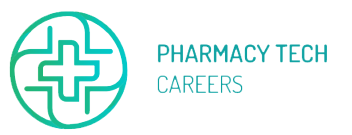History of Safety in Pharmacy
Ensuring safety in pharmacy practices is of utmost importance to protect the health and well-being of patients. Over the years, significant advancements have been made to establish and maintain safety standards in the pharmacy industry. This article will delve into the history of safety in pharmacy, including its definition, early practices, and modern approaches.
A. Definition
Safety in pharmacy refers to the measures taken to minimize the risks associated with the preparation, dispensing, and administration of medications. It encompasses various aspects, such as accurate labeling, appropriate storage, proper handling, and effective communication between healthcare professionals.
To maintain safety, pharmacy technicians must adhere to established protocols and guidelines, follow standard operating procedures, and stay updated with the latest advancements in pharmaceutical sciences.
B. Early Practices
In ancient times, when pharmacy was still in its infancy, safety practices were relatively limited. However, even then, certain precautions were taken to ensure the quality and integrity of medications. Some early safety practices included:
- Using natural substances derived from plants and animals for medicinal purposes.
- Preparing remedies in controlled environments to minimize contamination.
- Documenting recipes and techniques for future reference.
- Employing basic labeling methods to identify ingredients and dosages.
While these practices laid the foundation for safety in pharmacy, they were far from comprehensive. The need for more robust safety measures became apparent as pharmaceutical science advanced.
C. Modern Practices
The modern era has witnessed significant developments in pharmaceutical technology and safety practices. Thanks to scientific advancements and regulatory efforts, the following safety measures have been implemented:
- Good Manufacturing Practices (GMP): GMP guidelines ensure the quality, safety, and efficacy of pharmaceutical products. These guidelines cover various aspects of manufacturing, including facility design, equipment validation, personnel training, and quality control.
- Standard Operating Procedures (SOPs): SOPs outline step-by-step instructions for various pharmacy operations. These procedures help maintain consistency, reduce errors, and ensure the safety of both patients and healthcare professionals.
- Medication Error Reporting Systems: Reporting systems allow healthcare professionals to document and analyze medication errors. This information helps identify areas for improvement and implement preventive measures to enhance patient safety.
- Technology Integration: Advancements in technology have revolutionized pharmacy practices. Automated dispensing systems, electronic medication administration records (eMARs), barcode scanning, and computerized physician order entry (CPOE) systems have significantly reduced medication errors and improved patient safety.
Furthermore, regulatory bodies such as the Food and Drug Administration (FDA) and the Joint Commission play crucial roles in setting safety standards and enforcing compliance within the pharmacy industry.
In conclusion, safety in pharmacy has evolved significantly over time. From basic practices in ancient times to the comprehensive systems in place today, ensuring patient safety remains a top priority for pharmacy technicians. By adhering to established protocols, staying updated with evolving practices, and embracing technological advancements, pharmacy technicians play a vital role in maintaining a safe environment for patients.
For more information on pharmacy safety practices, you can visit the following authoritative websites:
II. Current State of Safety in Pharmacy
A. Regulations & Compliance
Pharmacy technicians play a crucial role in ensuring the safety and well-being of patients in the healthcare system. As the demand for prescription medications continues to rise, it becomes increasingly important to maintain high standards of safety in pharmacies. This section explores the current state of safety in pharmacy, focusing on regulations and compliance.
1. Regulatory Bodies:
– The primary regulatory body governing pharmacy practice in the United States is the state board of pharmacy. Each state has its own board, which establishes and enforces regulations to protect public health and safety.
– The Pharmacy Technician Certification Board (PTCB) is another important organization that sets standards and certifies pharmacy technicians. Obtaining PTCB certification demonstrates a technician’s commitment to professionalism and adherence to best practices.
2. Compliance with Laws and Regulations:
– Pharmacy technicians must be well-versed in federal and state laws governing the practice of pharmacy, including those related to controlled substances, patient privacy (HIPAA), and record-keeping.
– Strict adherence to regulations regarding medication storage, handling, and dispensing is essential to prevent errors and ensure patient safety.
– Regular audits and inspections by regulatory bodies help identify any non-compliance issues and provide opportunities for improvement.
3. Quality Assurance:
– Quality assurance programs are crucial in maintaining a safe pharmacy environment. These programs involve regular checks and evaluations to ensure that processes are being followed correctly and that medications are stored, compounded, and dispensed accurately.
– Technicians should be familiar with quality control techniques such as double-checking medication orders, verifying patient information, and conducting final checks before dispensing medications.
B. Automation & Technology
Advancements in technology have significantly impacted the pharmacy industry, leading to increased efficiency and improved safety measures. Pharmacy technicians must stay updated on the latest automation and technology trends to provide the best possible care to patients.
1. Electronic Health Records (EHR):
– EHR systems have revolutionized the way patient information is stored and accessed. Pharmacy technicians play a crucial role in maintaining accurate and up-to-date medication records within EHR systems, ensuring seamless communication between healthcare providers.
2. Automated Dispensing Systems (ADS):
– ADS, commonly known as robotic dispensing machines, help reduce medication errors by automating the dispensing process. Pharmacy technicians work alongside these systems to load medications, troubleshoot issues, and ensure accuracy.
3. Barcode Medication Administration (BCMA):
– BCMA systems use barcodes on medication packaging to match patients with their prescribed medications. Pharmacy technicians are responsible for accurately labeling medications and ensuring that barcodes are scannable, reducing the risk of medication administration errors.
C. Education & Training
Proper education and training are essential for pharmacy technicians to perform their duties safely and effectively. Here are some key points related to education and training in this field:
1. Accredited Pharmacy Technician Programs:
– Pharmacy technician programs accredited by the American Society of Health-System Pharmacists (ASHP) or other recognized accrediting bodies provide comprehensive training in pharmacy operations, medication safety, and ethical considerations.
– Completing an accredited program equips pharmacy technicians with the necessary knowledge and skills to excel in their roles.
2. Continuing Education:
– Continuous learning is vital in the rapidly evolving field of pharmacy. Pharmacy technicians should actively seek opportunities for continuing education to stay updated on new medications, regulations, and best practices.
– Professional organizations like the National Pharmacy Technician Association (NPTA) and the American Association of Pharmacy Technicians (AAPT) offer various educational resources and continuing education programs.
In conclusion, maintaining safety in pharmacy is a collective responsibility involving adherence to regulations and compliance, utilization of automation and technology, and continuous education and training for pharmacy technicians. By staying informed and up-to-date, pharmacy technicians can contribute to a safer healthcare environment for patients and ensure the highest standards of care.
III. Future Trends in Pharmacy Safety
A. Adoption of New Technologies
As the field of pharmacy continues to evolve, the adoption of new technologies plays a significant role in improving safety and efficiency. These advancements not only streamline processes but also enhance patient care. Here are some key technologies that pharmacy technicians should be aware of:
1. Electronic Prescribing: Electronic prescribing systems enable healthcare providers to send prescriptions directly to pharmacies electronically. This technology eliminates the need for handwritten prescriptions, reducing the risk of errors due to illegible handwriting.
2. Telepharmacy: Telepharmacy allows pharmacists to provide remote pharmaceutical care to patients via video conferencing or phone calls. This technology is particularly beneficial for individuals in remote areas with limited access to healthcare facilities. It also enables pharmacists to monitor patients’ medication adherence and provide counseling from a distance.
3. Robotics and Automation: The use of robots and automation systems in pharmacies is becoming more prevalent. These technologies can accurately count, label, and package medications, reducing the chance of human error. They also free up time for pharmacy technicians to focus on other patient care activities.
For more information on the adoption of new technologies in pharmacy, you can visit Pharmacy Times.
B. Growing Emphasis on Patient Care Quality and Safety
In recent years, there has been a growing emphasis on enhancing patient care quality and safety within the pharmacy profession. Pharmacists and pharmacy technicians are now playing a more active role in patient care beyond just dispensing medications. Here are some trends driving this shift:
1. Medication Therapy Management (MTM): MTM involves comprehensive medication reviews, medication reconciliation, and ongoing monitoring to ensure optimal medication therapy outcomes. Pharmacy technicians assist pharmacists in conducting MTM services by collecting patient information, performing medication reviews, and educating patients on proper medication use.
2. Collaborative Practice Agreements (CPAs): CPAs allow pharmacists and pharmacy technicians to work collaboratively with other healthcare providers, such as physicians and nurses, to optimize patient care. This partnership fosters better communication, improves medication management, and reduces medication errors.
3. Expanded Clinical Services: Pharmacy technicians are increasingly being trained to perform clinical tasks, such as administering vaccinations, conducting health screenings, and providing medication counseling. These expanded roles contribute to better patient outcomes and improved access to healthcare services.
To learn more about the growing emphasis on patient care quality and safety, you can visit American Pharmacists Association.
C. Increasing Use of Automation to Improve Efficiency and Accuracy
Automation technologies have revolutionized pharmacy operations by improving efficiency and accuracy. Pharmacy technicians should familiarize themselves with the following automation tools:
1. Prescription Filling Systems: These systems automate the process of dispensing medications by sorting, counting, and labeling prescriptions. They minimize errors associated with manual filling, ensuring accurate medication doses.
2. Barcode Scanning: Barcode scanning technology helps verify medication information at various stages, including inventory management, dispensing, and administration. It reduces the risk of medication mix-ups and enhances patient safety.
3. Automated Medication Dispensing Cabinets: These cabinets store and dispense medications securely within healthcare facilities. Pharmacy technicians can use them to efficiently manage inventory, track medication usage, and reduce the risk of medication errors.
For additional insights on the increasing use of automation in pharmacies, you can visit Institute for Safe Medication Practices.
In conclusion, the future of pharmacy safety is shaped by the adoption of new technologies, a growing emphasis on patient care quality and safety, and the increasing use of automation. Pharmacy technicians who stay up-to-date with these trends can contribute to safer medication practices and improved patient outcomes.

